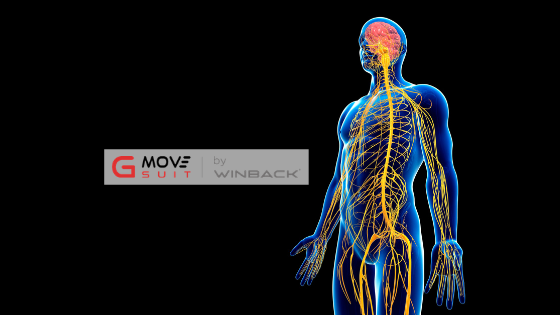GMOVE-SUIT helps people with psychomotor disorders by supporting them in their movements. For more than a year now, we have been obtaining positive results with post-stroke patients, those suffering from multiple sclerosis, Ehlers-Danlos syndrome or Parkinson’s disease. Mechanoreceptors play a key role in this obvious improvement. How does it work? Let’s take a closer look at the role and contribution of mechanoreceptors.
A mechanoreceptor is a generic term for sensory neurons that are sensitive to mechanical deformations. Among these mechanoreceptors, there are two different types: skin mechanoreceptors and proprioceptors. They both respond to stimuli of different nature and intensity.
How do they work?
A mechanoreceptor is a sensory receptor that responds to mechanical pressure or distortions of the skin. For a reaction to occur, there must be a change in its environment such as pressure, vibration or touch on a body part.
For the skin mechanoreceptors, there are five different ones which can be distinguished by their location and depth.
Some of these receptors are slowly adapting. They analyse the intensity, duration of pressure and stretching of the skin. This sensitivity allows the receptors to inform the central nervous system about the forces and direction to accompany a joint movement.
Others are sensitive to tilt and vibration, which are rapidly adaptable for frequencies between 5 and 200 Hz. These are light contacts on the skin. For example, this adaptation can come from the sensation of the clothes we wear.
Then we have the mechanoreceptors, which are only sensitive to rapid changes in intensity which correspond to an acceleration of the skin deformation. These receptors are very sensitive to vibrations and are located in the subcutaneous fatty tissue (tendons, facial muscles, joints).
There are approximately five times more fast adapting receptors than slow ones. Depending on the density of the skin and the location, the variability is important. The fingers are particularly sensitive to contact and therefore have fast adapting receptors.
Using compression with GMOVE-SUIT
The GMOVE-SUIT is a device that applies constant pressure to the lower limbs, sufficient to stimulate the mechanoreceptors. This is a slow adaptation because the pressure is constant. As explained earlier, this sensitivity will therefore inform the central nervous system about the forces and direction to accompany a joint movement.
The GMOVE-SUIT is currently used by physiotherapists in the rehabilitation phase of trauma patients, in orthopaedics and for proprioceptive assistance for patients with psychomotor disorders. The aim is to restore the connections between the nervous system and the area affected by a pathology more quickly.

